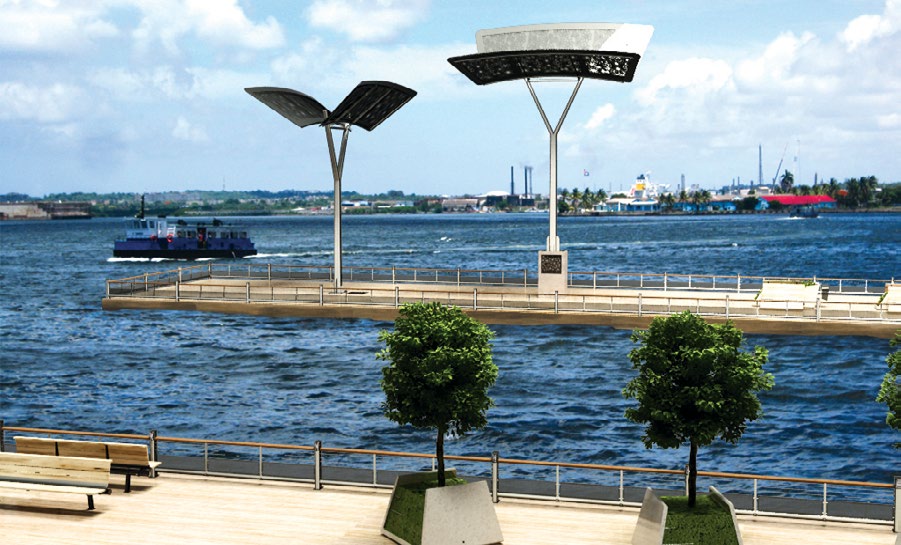Industrial Design inserted into the Urban Public Space.
##plugins.themes.bootstrap3.article.main##
Abstract
Urban public spaces are characterized by the communion of several elements that operate at different scales, as a great system that defines urban design, and therefore the most obvious image of any city. Such as urban guidelines by themselves, architecture, environmental graphic, sculptural works, landscaping, and the own passers; street furniture, becomes an object of paramount importance for users of these public spaces and especially for the industrial designer, and which is the most visible transit between the great city space and the users of it. The objective of this work is to performan assessment tool of street furniture, to reflect in itself the quality or quantity of relevant analysis, measurable forgathering information variables, and let the guidelines necessary to design according to the context immediate urban.
##plugins.themes.bootstrap3.article.details##

This work is licensed under a Creative Commons Attribution-NonCommercial-ShareAlike 4.0 International License.
- Attribution — You must give appropriate credit , provide a link to the license, and indicate if changes were made . You may do so in any reasonable manner, but not in any way that suggests the licensor endorses you or your use.
- NonCommercial — You may not use the material for commercial purposes .
- No additional restrictions — You may not apply legal terms or technological measures that legally restrict others from doing anything the license permits.
- ShareAlike — If you remix, transform, or build upon the material, you must distribute your contribution under the same license as the original. NOTE: This point applies to numbers 1 to 20 of the magazine with the previous CC-BY-NC-SA 4.0 license. Does not apply to the new CC BY-NC 4.0 license from Volume 11, Number. 21 (2024).
References
Berger, John. (2002) Algunos pasos hacia una pequeña teoría de lo visible. Editorial Gustavo Gili. Barcelona.
Buajasán Gómez, María Cleofás. (2013). Manual de Reparación y mantenimiento de edificaciones del Centro Histórico de La Habana. Escandón Impresiones. España.
Cambiaghi, Silvana. Desenho Universal. (2012). Editora SENAC. Sao Paulo. Brasil.
Ching, Francis D.K. Arquitectura. (1998).Forma, Espacio Orden. Editorial Gustavo Gili, Barcelona.
Ching, Francis D.K. (1997).Diccionario visual de Arquitectura. Editorial Gustavo Gili. Barcelona.
Gordillo Paneque, Claudia. (2011).Tesis de Maestría: "Herramientas para el tratamiento del factor uso con intervención de la Ergonomía durante el Proceso de Diseño". Instituto Superior de Diseño, La Habana.
Hernández Sampier, (2004). Metodología de la Investigación, tomo 1, Editorial Felix Varela, La Habana.
Hesket, J.: (2001). “Desing is a desing for desing.” (Diseño es el Diseño para el Diseño). DesignIssues. Volumen 17, No 1, Winter.
Neufert, E. (1996). El arte de proyectar en arquitectura. Editorial Gustavo Gili. México. Tercera Edición.
Mederos Tió, Ariel. (2012). Trabajo de Diploma: “Mobiliario Urbano para Proyecto de reanimación de la Avenida del Puerto”. Instituto Superior de Diseño. La Habana, Cuba.
Norma Cubana (NC) 674-6: 2009. Edificaciones. Requisitos De Alcance Y Contenido De Los Servicios Técnicos. Parte 6: Diseño De Interiores.
Cabrera Bustamante, Armando. (2011). Propuesta de estructuras y procesos que caractericen al diseño industrial, y articulen con el inicio de proyectos de diseño. Tesis presentada en opción al título académico de Máster en Gestión e Innovación de Diseño. La Habana.
Callister, W.D. (1997). Introducción a la Ciencia e Ingenie- ría de los Materiales. Barcelona: Editorial Reverté, S.A. 84-291-7253X.
D.K. Ching, Francis. (2012). Arquitectura. Forma, espacio y orden. Editorial Gustavo Gili, SL. Barcelona. Tercera Edición revisada y actualizada.
Diaz Martín, YandySalvy. (2003). "Mobiliario Urbano para Centro Habana". Ciudad de la Habana.
Fortiá I Rius, Jordi. (2008)."Marquesinas para la Ciudad de la Habana". ISDi-UDG. La Habana.
Quesada Campaña, Talia-Cabrera González, Fátima. (2011). “San Isidro: Una excusa para el encuentro”. La Habana.






















